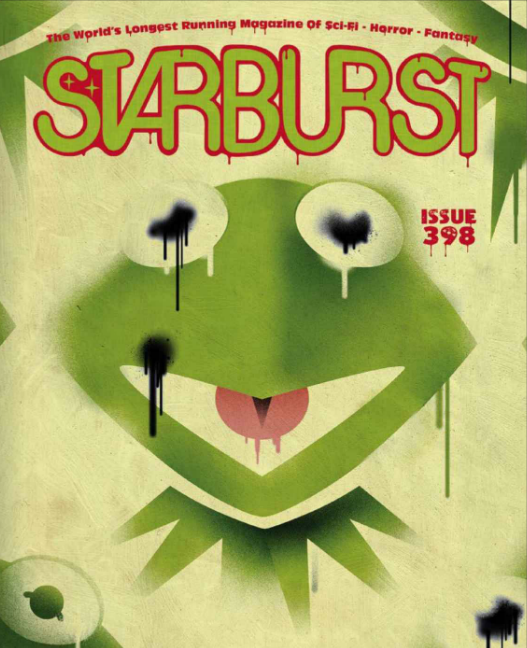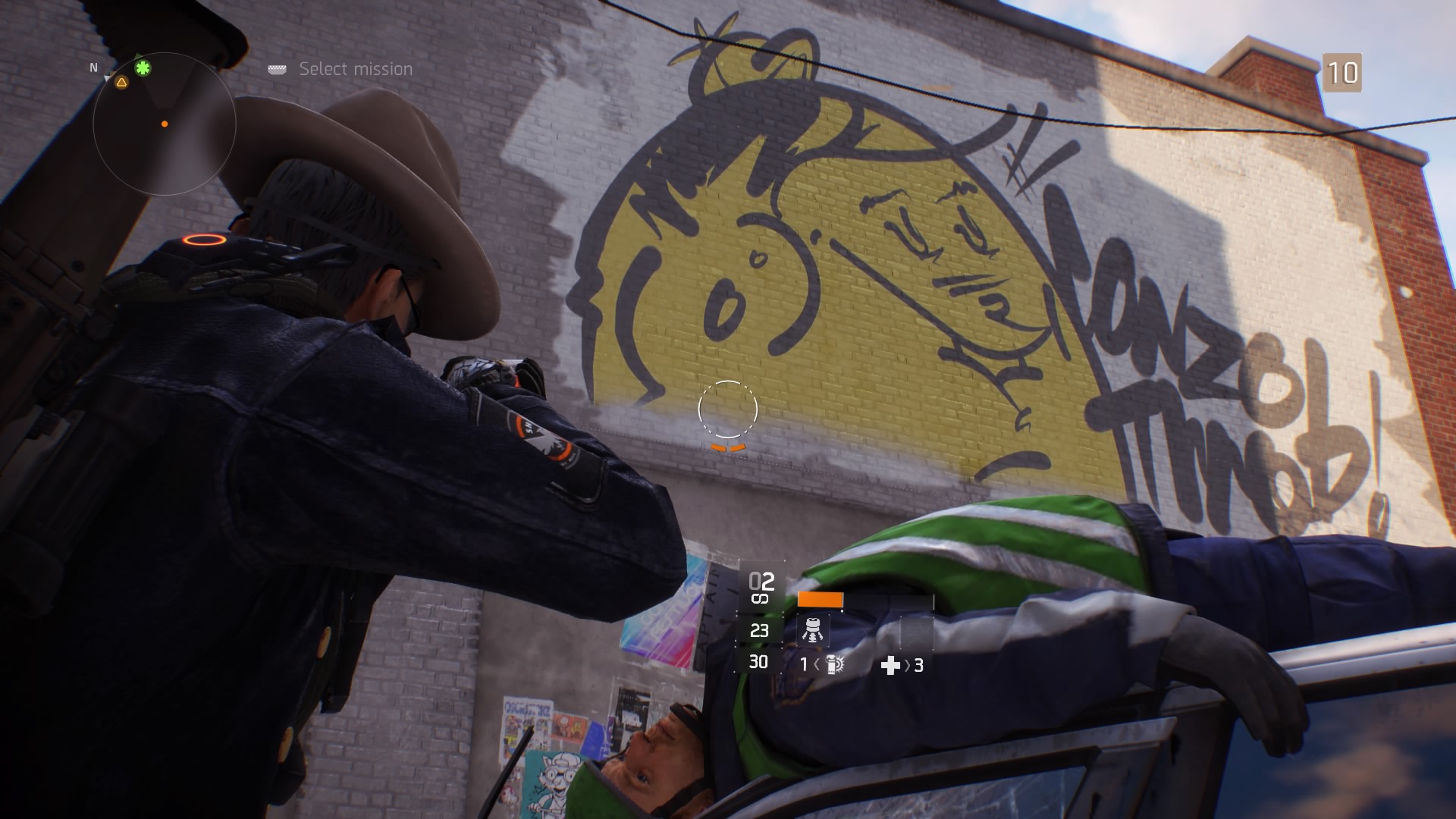The history of graffiti and street art is a long one – arguably dating back to cave paintings, and certainly as a recognised feature of Roman civilisation. But the modern street art movement has its deepest roots in New York's graffiti boom of the 1970s and 1980s, peaking with the famous spraypainted subway train murals of the Bronx.
These explosively colourful creations led to a surge in global interest, and soon street artists were active in cities worldwide. Many made the transition into the mainstream art world, and today, graffiti artists exhibit their work as often in galleries as on the streets, with some work changing hands for millions.
Along the way, street artists have influenced, and continue to influence, creatives everywhere. In this article we'll look at how what was once seen as mindless vandalism has become part of the mainstream currency of design and creativity.
01. Album artwork

The original '70s graffiiti scene in the Bronx was intertwined with the rise of rap music, so it's not surprising that music design is where its influence is mostly keenly felt today.
But street art has expanded its pull way beyond the hip-hop scene, with contemporary musicians of all genres both collecting street artists' work and commissioning them to create original album art.
Notable examples include Street Phantom's outline of a man with raised fist for Rage Against the Machine's The Battle of Los Angeles; Banksy's canoodling deep-sea divers for Blur's Think Tank; D*Face's cyborg-esque vision of Christina Aguilera for Bionic; and KAWS' vibrant cartoon graphics for Kanye West's 808s & Heartbreak album.
02. Fashion design
Over the years, graffiti artists such as Mike Giant, Pursue, Rime and Noah have carved out careers in skateboard, clothing and shoe design for the links of DC Shoes, Adidas, Nike and Puma. And the wider world of fashion has embraced street art too.
Daily design news, reviews, how-tos and more, as picked by the editors.
Last year, for example, saw Moschino's AW15 show feature floor-length gowns scrawled with graffiti tags, and Mr Brainwash collaborating with Sunglasses Hut to design a line of spray paint-splattered Raybans.
03. Print design

The street art scene has long held a grip on the hipper end of print design. Alongside music titles and fanzines, its influence in the 1980s was marked in style bibles like i-D and The Face, which harnessed its spirit to inject magazine design with a much-needed sense of vibrancy and visual innovation.
Over the years, print design's cross-pollinating relationship with street art has expanded and gone mainstream, with artists like Keith Haring and Shepard Fairey themselves becoming graphic designers. Fairey's 'Hope' poster featuring Obama saw the apex of this trend towards respectability, with the iconic design appearing on the cover of Time and used in the official presidential campaign.
Street art has also been influencing other artforms such as doodle art, in which print designs themselves are defaced with vibrant and surreal scribblings. This style is also now being co-opted by hip titles such as Fiasco magazine, which commissioned Hattie Stewart to design their volume 3, issue 21 cover.
04. Typography

The essence of the graffiti tag is that it's imbued with cultural and social meaning. So it's unsurprising that street art has long been an influence on mainstream typography.
In 1994, Paula Scher turned heads when she incorporated graffiti-style typography into her new identity and promotional graphics system for The Public Theater in New York. And countless others have followed in her wake, adapting the style, verve and symbology of graffiti within their own typographic designs.
In recent year, street art has been a big influence in the rise of the hand lettering movement, with street artists-turned-graphic designers such as Seizer One helping lead the way. It's an approach that's often seen in logo designs too, from Vice magazine to the 2012 London Olympics.
While the random chaos offered by street art stands in opposition to the formality of conventional typefaces, in many ways the stencil trend bridges the gap. See above how BlueMarlin have used this approach to update the logo of Portuguese soft drink Sumol. Honey Creative recently took a similar approach in creating a graffiti-style logo for Taywell ice cream brand Sweet Rebellion.
05. Advertising

Want a clear sign of how much street art, once a sign of rebellion, has been co-opted by society? Then just look at how it's been harnessed by mainstream advertising. Once seen as a menace to society, graffiti artists are now commonly hired to paint murals legitimately, in the service of commerce. There are even agencies that connect big brands looking to hire to street artists, including Tatscru, ALT Terrain and CriticalMassive.
Street art is also being used within more mainstream forms of advertising, including posters, print ads and TV commercials. Coca-Cola worked with Brazilian street artist Speto on its visual identity for the 2014 World Cup (see above). And possibly the least 'street' brand ever, Perrier, has even jumped on the bandwagon, recently unveiling its 'Inspired by Street Art' collection featuring designs by French artist L'Atlas.
Of course, for every action there's an equal and opposite reaction – and so some street artists are fighting back against the mainstreaming of the movement, and indeed the advertising industry itself. A collective known as Special Patrols Group, for example, has been using special 'Ad Space Hack Packs' to open bus stop poster casings and switch out adverts for their parody posters in London and other UK cities.
06. Multimedia

Graffiti art, with its focus on the gritty and physical, might seem like the antithesis of the digital world and its virtual (un)reality. But even here, street art is making its presence felt. Take Ubisoft Massive, which commissioned original street art to adorn the walls of its open-world online game Tom Clancy's Division, set in a post-pandemic New York.
The in-game murals, curated by art collective Monorex, were created by 22 well-known artists from around the globe including Buff Monster, Gregg Mike, Inkie, Captain Kris and Lamour Supreme. They served two clear purposes for Ubisoft. One was to provide useful landmarks for navigating the apocalyptic city. The second was to give the game a sense of credibility – so the company was keen for artists to submit work in their own signature styles, rather than work to a brief.
It's this sense of authenticity that's key to the use of street art in creative projects – no matter what the discipline. And with street artists continuing to influence, and indeed shape, all manner of creative projects, it's clear that the often uneasy relationship between urban street art and mainstream design is set to continue for some time to come.
Read more:

Tom May is an award-winning journalist and author specialising in design, photography and technology. His latest book, The 50th Greatest Designers, was released in June 2025. He's also author of the Amazon #1 bestseller Great TED Talks: Creativity, published by Pavilion Books, Tom was previously editor of Professional Photography magazine, associate editor at Creative Bloq, and deputy editor at net magazine.
